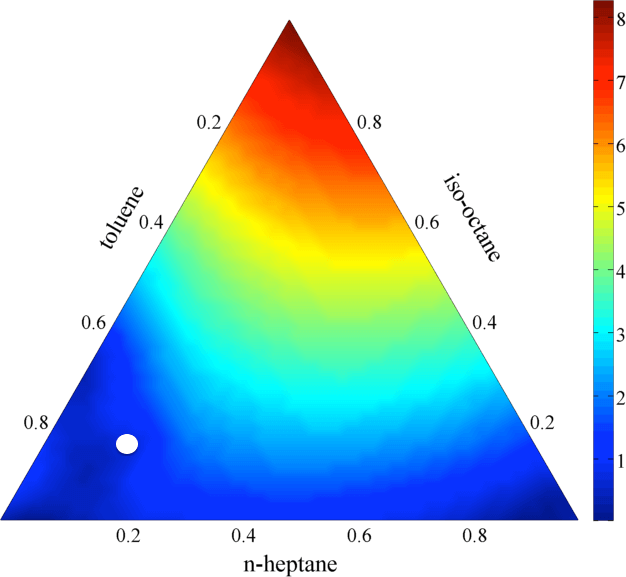Abstract
Strategies and recommendations for performing skeletal reductions of multicomponent surrogate fuels are presented, through the generation and validation of skeletal mechanisms for a three-component toluene reference fuel. Using the directed relation graph with error propagation and sensitivity analysis method followed by a further unimportant reaction elimination stage, skeletal mechanisms valid over comprehensive and high-temperature ranges of conditions were developed at varying levels of detail. These skeletal mechanisms were generated based on autoignition simulations, and validation using ignition delay predictions showed good agreement with the detailed mechanism in the target range of conditions. When validated using phenomena other than autoignition, such as perfectly stirred reactor and laminar flame propagation, tight error control or more restrictions on the reduction during the sensitivity analysis stage were needed to ensure good agreement. In addition, tight error limits were needed for close prediction of ignition delay when varying the mixture composition away from that used for the reduction. In homogeneous compression-ignition engine simulations, the skeletal mechanisms closely matched the point of ignition and accurately predicted species profiles for lean to stoichiometric conditions. Furthermore, the efficacy of generating a multicomponent skeletal mechanism was compared to combining skeletal mechanisms produced separately for neat fuel components; using the same error limits, the latter resulted in a larger skeletal mechanism size that also lacked important cross reactions between fuel components. Based on the present results, general guidelines for reducing detailed mechanisms for multicomponent fuels are discussed.
